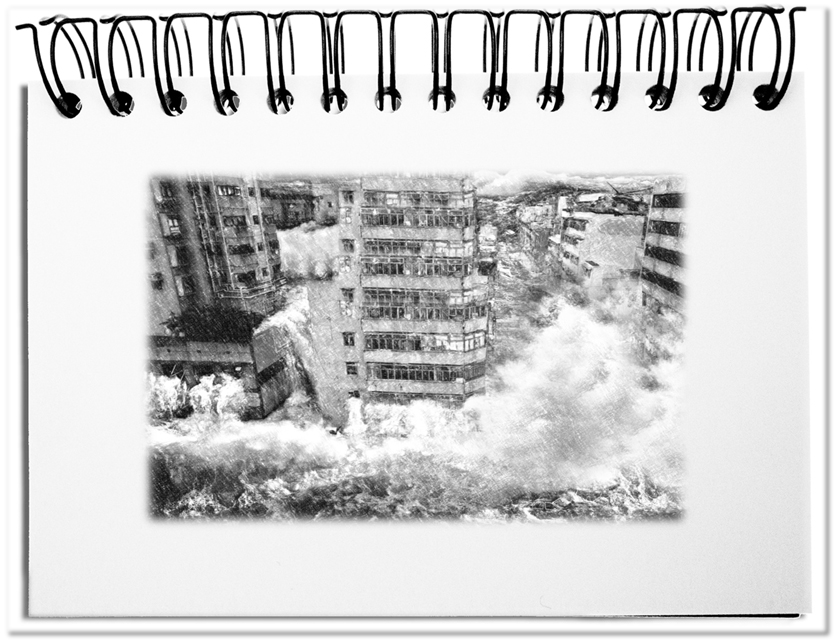In everyday life we benefit from the facts we know and for which we have developed a repertoire of behaviors. Depending on our disposition, changes unsettle us more or less. In order not to be too surprised by upcoming events, we try to foresee the future and prepare ourselves for it. For this purpose, we consider correcting variables that we otherwise perceive rather randomly. This foresight establishes connections that consist of smallest influences. These ideas suggest accuracy due to their fine granularity. However, there are times when the changes are not only visible in the subtleties, but in the major upheavals. If then many far-reaching transformations happen at the same time, we are in a time of radical change.
We now seem to have arrived in such a time. Therefore we take a brief look at the PEST effects, wherein simultaneous changes become visible.
- Political effects
The virtualization of the world has made political borders disappear. The delimitation is no longer between left and right, but between extremes and normals or between different religions or between cultures. The old motto is simple: We are right, the others are wrong. From any point in the world, it takes one click into a region, where completely different rules and laws apply. The view through the window of the screen feels actually harmless, since you still seem to be in your own legal sphere. So you can order something abroad, but as soon as the delivery crosses the border, your national laws apply. As a result, certain goods are no longer allowed or additional customs duties are incurred. In addition, between countries and within regulated economic zones, other regulations are applied which can only be understood by experts. Although such rules affect everyone, they are negotiated and adopted behind closed doors, as TTIP has shown (thanks to Trump, negotiations should pause at the moment). Besides the economy, politics has far-reaching authorities, which are justified by nothing more than an election. As long as the power blocks of the world are in competition with each other, autocrats can question and terminate the agreements at any time. What is needed is a recognized, contemporary, global coordination center. - Economic effects
Since the photo Earthrise that was taken by William Anders on December 24, 1968, we should be aware that we live in a finite system. Such a closed system cannot grow without supplying energy from its environment or another system. And yet today, decision-makers are still trying to exploit other countries by levying taxes, influencing exchange rates or playing all kinds of restrictions as trumps. The national pride that is abused for it, which drives the population into competition with the rest of the world, endangers peace and revives old conflicts. If economic success is based on the loss of others, decision-makers should be aware that there are no others in ONE world. This means that the monetary system gets unified, the distribution of labor and income ensures the survival of all, and that the reasons for making business are rearranged. Growth is not a real goal for a closed system, but viability. - Socio-cultural effects
The world has become more comprehensible and accessible. At the same time, this proximity creates a new diversity with often contradictory perspectives. The forces that dominated world affairs for a long time have gradually shifted towards the emerging regions of Asia and Africa. A simple example is the new Silk Road, which is in the process of replacing the established routes of the economy. It enables China to globally position its well-educated people, who are held together by a value system that has been proven over thousands of years and who are equipped with a historically founded self-confidence. This upheaval, which has been visible for years, is shifting the focus from the Atlantic to the Pacific, replacing the fabric of the last seventy years. The societies that have been exploited for centuries for the benefit of the old world are breaking away from old habits and swinging the pendulum towards the south and east. We are experiencing the first socio-cultural effects with the increasing revival of the nation and the hysterical measures to seal oneself off with trade barriers to the outside. The existing rules no longer apply and the new ones will be made elsewhere. Companies, NPOs and NGOs as well as global institutions have to reorient themselves. - Technological effects
Forty years after the introduction of the PC, information technology (IT) has permeated all areas. Simultaneously, a network was created that allows us to be connected to any point on earth with a single click – as long as the required electricity and access to the network are available. The current wave of digital transformation is nothing more than an additional attempt to increase the importance of IT – Big Data, Artificial Intelligence, Augmented Intelligence, Automation, Robotics, 3D Printing, etc. Whereas in the past it was lamented that the workforce was forced to work under inhumane conditions, today the same groups complain that automation in the production of goods and services robs them of their livelihoods. The new designs are too concerned with the tools, instead of creating holistic solutions, which continue to provide people with opportunities to make a living. Virtualization, i.e. the representation of the material world in the computer, creates completely new possibilities for doing business. Above all, easy access to markets for everyone, wherever they are, needs a new understanding of work. Old skills are replaced by previously little-known ones – from executing an activity to monitoring; from processing knowledge to generating it; from evaluating data to interpreting it. This upheaval affects everybody. The skills and abilities need to be re-educated so that everyone can be involved in this upheaval.
Bottom line: We don’t need fine-tuned measuring points to recognize that we are in a time of upheaval that is turning everything upside down. The large upheavals are visible to the naked eye. The new division of the world no longer suits the given societies. The computer and networking make the foundations of the old economic activity obsolete. This changes the way the economy operates and the masses of workers are worried about how they will earn their money tomorrow. At the same time, politicians get stuck in the dilemma of global or national politics, which makes the right wings to lure out from behind the stove. The Every-man-for-himself will evoke the danger of international conflicts, which can even destroy the idyll of the Western world. The First World War brought weapons of mass destruction. The Second World War brought nukes. The Third World War is probably happening for a while in virtuality – who would believe that only Russia uses computers to destabilize? What else does it take to notice the upheaval? This means for ALL participants that they have to deal with these changes. Companies that currently have no answers to these radical changes and do not actively prepare for them, act irresponsibly. New approaches are needed for politics, economics, society, and the use of technology.
Now I S the time of radical change.


